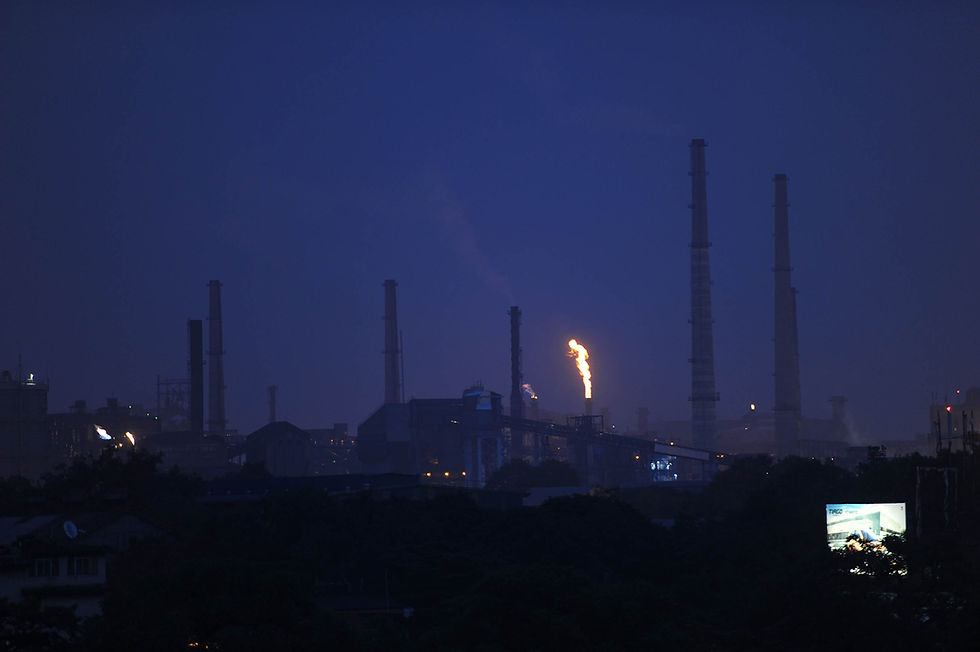Finding authentic inspiration in the Catskills
- danielmoore013
- Jul 22, 2017
- 4 min read

From the edge of the peak, the view unfolded like a Romantic painting.
Below us, verdant ridges rippled as far as the eye could see, like a stormy green ocean. Placid streams dissected deep valleys. The candy-blue sky was clear save some wisps of cirrus clouds and a pair of hawks floating contentedly on the soft breeze. A haze hung in the offing, some indeterminate distance away.
It was like America’s wilderness from another time, vast and mighty, there to be revered. It didn’t seem real.
Such are the meditations when taking in the Catskill Mountains after a rigorous hike up to the aptly named Giant Ledge — a rock feature rising above the surrounding area with a series of cliff-like overlooks that offer arguably the most satisfying perspective.
For as long as they’ve been known, the Catskills, a mountain range roughly 100 miles north of New York City that’s loosely connected to Pennsylvania’s Poconos, have captured the imagination in this way. Artists, musicians and writers have long explored the region as an idealistic rebuttal to the country’s rapidly expanding urban and industrial landscape.
Artists involved with a 19th-century movement dubbed the Hudson River School for the nearby waterway were among the first to immortalize the Catskills’ natural scenes as a sublime experience. In 1902, the Byrdcliffe Arts Colony was established on the side of a mountain providing a permanent retreat for people fleeing an increasingly complex society.
Suffice it to say that legacy has endured — perhaps to the pleasant surprise of the early pioneers. In a post-industrial world saturated with mobile information and noise, a trip to the Catskills still offers an escape that is increasingly hard to find.
My girlfriend Katherine and I took a five-day camping trip in the middle of July, sleeping in a tent in a state-run campground during the week, from Sunday until Thursday. It had always been on our map, but, a seven-hour drive from Pittsburgh, was impractical even if we had a long weekend. Knowing we had an open week coming up, we decided to go.

Planning where to stay and what to do can seem like a daunting task.
Catskill Park, governed by the New York State Department of Environmental Conservation, is officially about 700,000 acres spread across four counties. By design, it’s sparsely populated as far as towns go. A topographic map shows not much but rising peaks — there are 35 peaks at an elevation of 3,500 feet or higher — with some towns nestled within the valleys.
As with any vacation centered on the outdoors, there are differing degrees of ruggedness. For us, we owned a tent and recently bought camping equipment — a propane stove and sleeping ground mat are necessities well worth the expense — so we felt ready for several nights outside of four walls.
When trying to pick from the several campgrounds across the park, I simply put my finger in the center of the map. We settled on a place called Woodland Valley.
Though campground names tend to exaggerate natural features, we found it was, indeed, a breathtaking woodland valley at the base of the Giant Ledge on one side and Slide Mountain, the Catskills’ tallest peak at nearly 4,200 feet, on the other. We erected our tent on a generous patch of a nearly empty campground, as most come to stay on weekends. A brook rhythmically flowed nearby.
There are signs, too, that the Catskill wilderness framed by the Hudson River School paintings faces some encroachment today.

Where the artists truly charted new territory, a sleek marketing campaign from the Catskill Association for Tourism Services, driven by photos and short videos showing attractive and diverse millennials enjoying nature, only sells the idea of discovery.
Along with regular camping, the visitors bureau advertises to New England city dwellers places such as the Blue Hills Farm Tent & Breakfast, described as “a glamping experience reminiscent of an African safari outing” with “a plush queen-size bed” and heated bathroom. Kate’s Lazy Meadow Motel, founded by Kate Pierson, a former member of the B-52s, has “rustic luxury cabins” that offer “seclusion on a beautiful nine-acre meadow setting,” according to the website.



A ski resort distracted, if not tainted, the view from the summit of Plateau Mountain, one of the 3,500-foot peaks Katherine and I climbed our first afternoon there. And it’s easy to get lost in the abundance of hiking blogs that analyze the trails down to precise mileage and elevation. Compare photos to decide which one has the best payoff for your exertion.
But, taken together, the region has managed to maintain an unexpectedly authentic feel.
Although bustling with shoppers, the Catskill towns of Phoenicia, Tannersville and Woodstock avoid the degradation found in places with high tourist traffic. Quaint cafes, quiet bookstores, boutique shops and galleries line the main drag of Woodstock, most famously the namesake of the 1969 Woodstock Music Festival. (That was actually held 60 miles southwest in Bethel, N.Y.)
Sure, there are a few tourist havens, if you insist on buying a tie-dye shirt or peace sign memorabilia. But the Catskills are clearly still held by artists exploring the intersection of creation and conservation.
And it doesn’t take long, pinching yourself on the peak of the Giant Ledge, to understand why.






Comments